Gian Lorenzo Bernini: Astonishing Moro Fountain
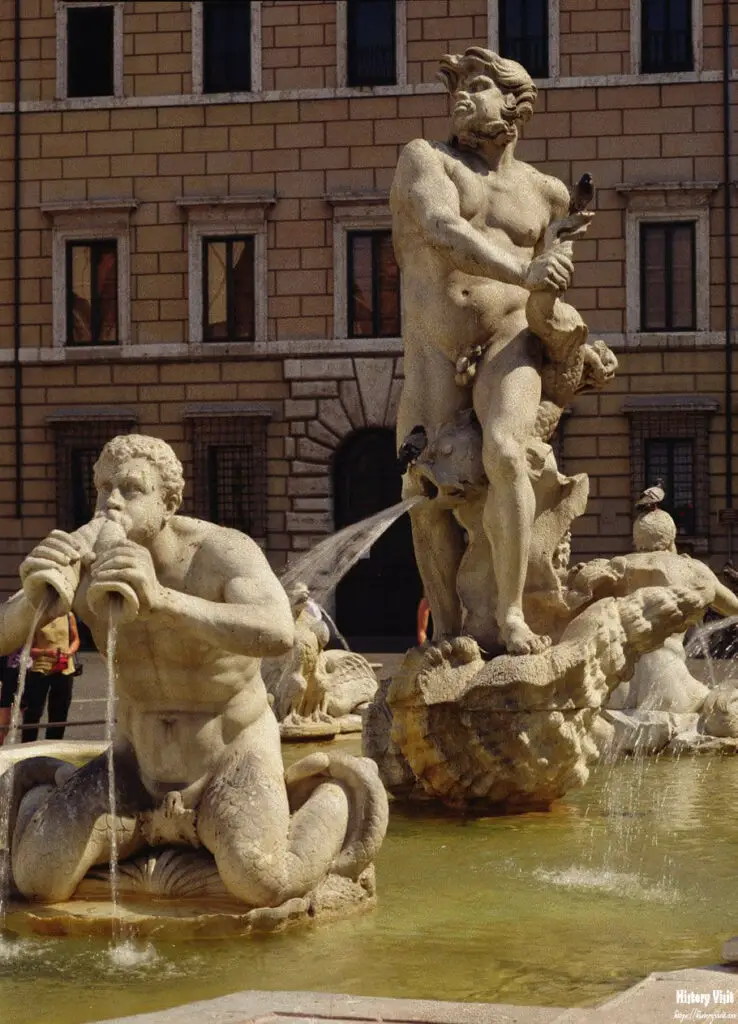
Introduction
Gian Lorenzo Bernini, a prominent Baroque artist, created many masterpieces. One of his most celebrated works is the Moro Fountain. This stunning fountain, located in Rome, epitomizes Bernini’s genius. The intricate design and powerful imagery captivate visitors.
Bernini’s works often feature gods and mythical creatures. The Moro Fountain is no exception. It tells a story through its detailed sculptures. These elements make the fountain a notable example of Baroque art. Understanding its significance enhances our appreciation of Bernini’s artistry.
The Moro Fountain, or Fontana del Moro, was designed in 1653. Its blend of beauty and mythology fascinates art lovers. This article explores the history, design, and impact of the fountain. Let’s delve into the world of Bernini’s Moro Fountain.
The History of the Moro Fountain
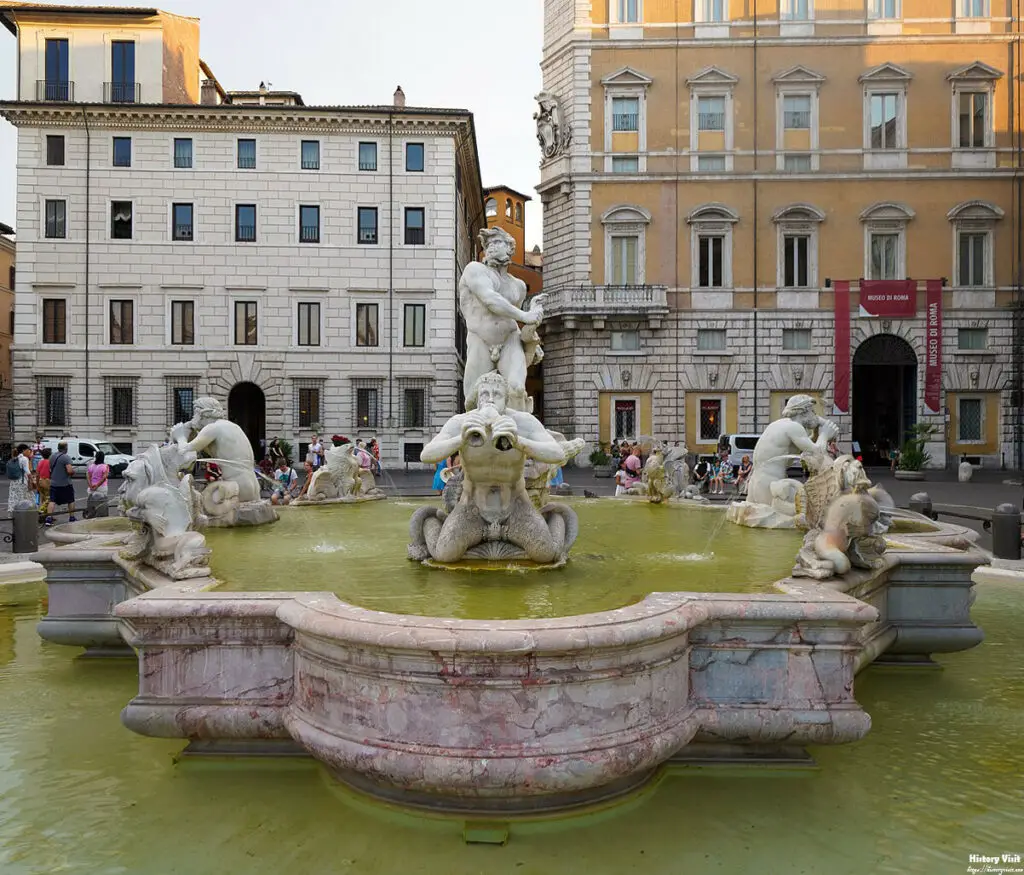
The Moro Fountain’s history is rich and intriguing. It was commissioned by Pope Innocent X. Located in Piazza Navona, it complements Bernini’s Fountain of the Four Rivers. The fountain’s name, “Moro,” means “Moor” in Italian. It refers to the central figure’s exotic features.
Pope Innocent X sought to enhance Rome’s beauty. He chose Gian Lorenzo Bernini for his unparalleled skill. The project began in 1653 and quickly became a highlight of the square. The fountain’s creation involved various artists. Bernini’s supervision ensured its cohesive design.
The fountain underwent several restorations. Each effort preserved its original splendor. These restorations maintained Bernini’s vision. The fountain remains a testament to his legacy. Today, it attracts countless tourists. Its historical significance and artistic merit are undeniable.
Gian Lorenzo Bernini: Artistic Influence
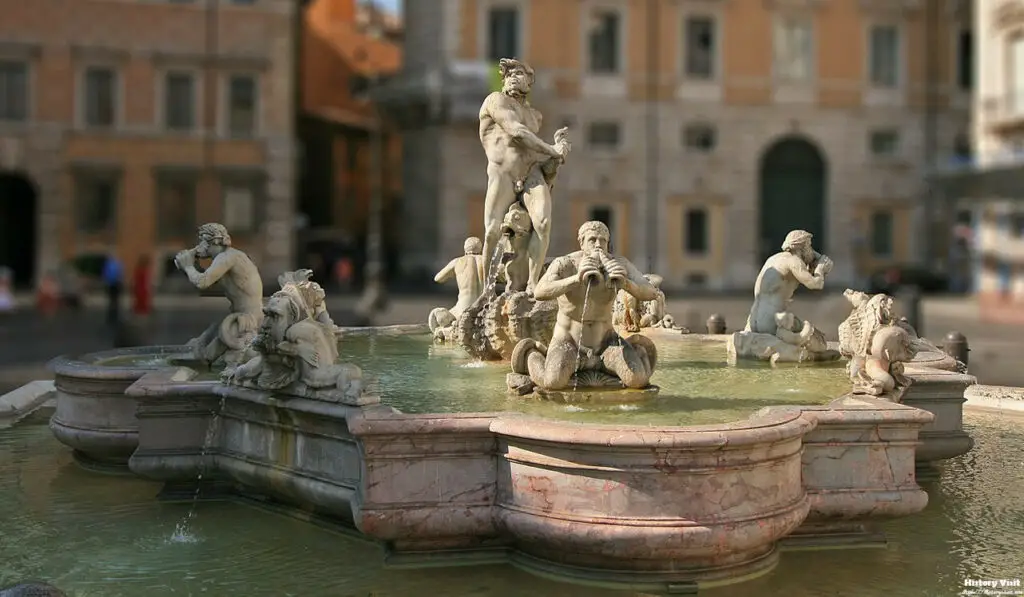
Bernini’s influence on Baroque art is profound. His works are characterized by dramatic realism. He skillfully combined architecture, sculpture, and painting. This multifaceted approach defined the Baroque era. The Moro Fountain exemplifies his style.
Bernini’s depiction of gods and monsters is captivating. He infused his sculptures with emotion. This approach brought his subjects to life. The Moro Fountain’s figures are dynamic and expressive. This technique was revolutionary for its time.
Bernini’s impact extends beyond his sculptures. He transformed Rome’s architectural landscape. His designs include St. Peter’s Basilica’s colonnade. His works continue to inspire modern artists. Bernini’s legacy is enduring and influential.
Gian Lorenzo Bernini: The Design and Symbolism of the Moro Fountain
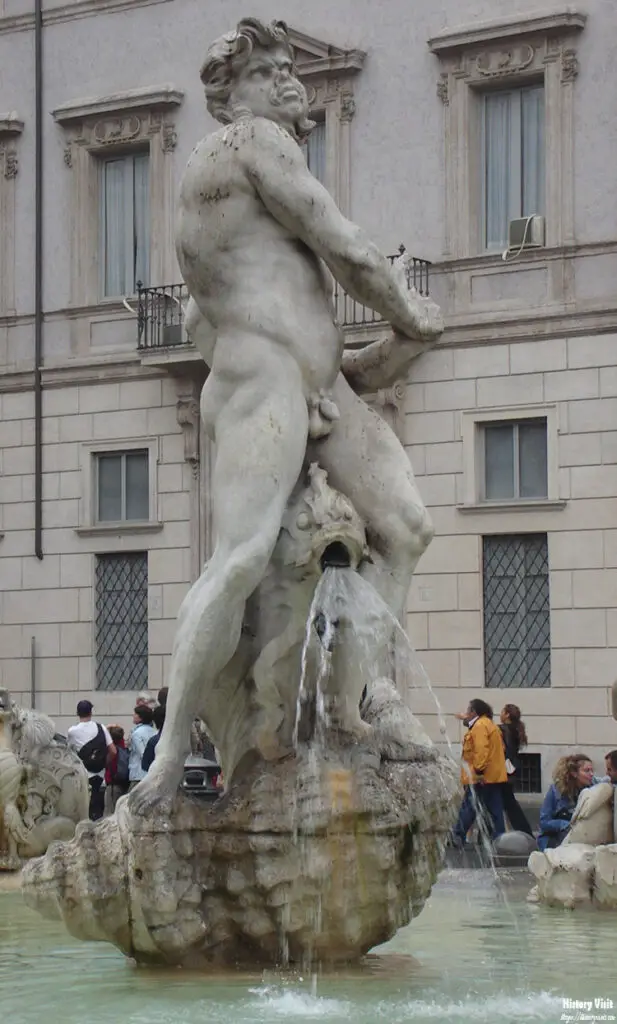
The Moro Fountain’s design is intricate and symbolic. The central figure is a Moor, wrestling with a dolphin. This figure represents a river god. The dolphin symbolizes water and life. Surrounding the Moor are four Tritons. They add to the mythological theme.
Bernini’s attention to detail is evident. The figures are dynamic and lifelike. The water’s movement enhances the sculpture’s realism. The fountain’s base features ornate carvings. These elements showcase Bernini’s craftsmanship.
The fountain’s symbolism is rich. It reflects the power of nature and mythology. The Moor’s struggle with the dolphin represents man’s relationship with water. The Tritons add to the narrative. They emphasize the mythological context. Bernini’s use of symbolism is masterful.
The Gods and Monsters Depicted
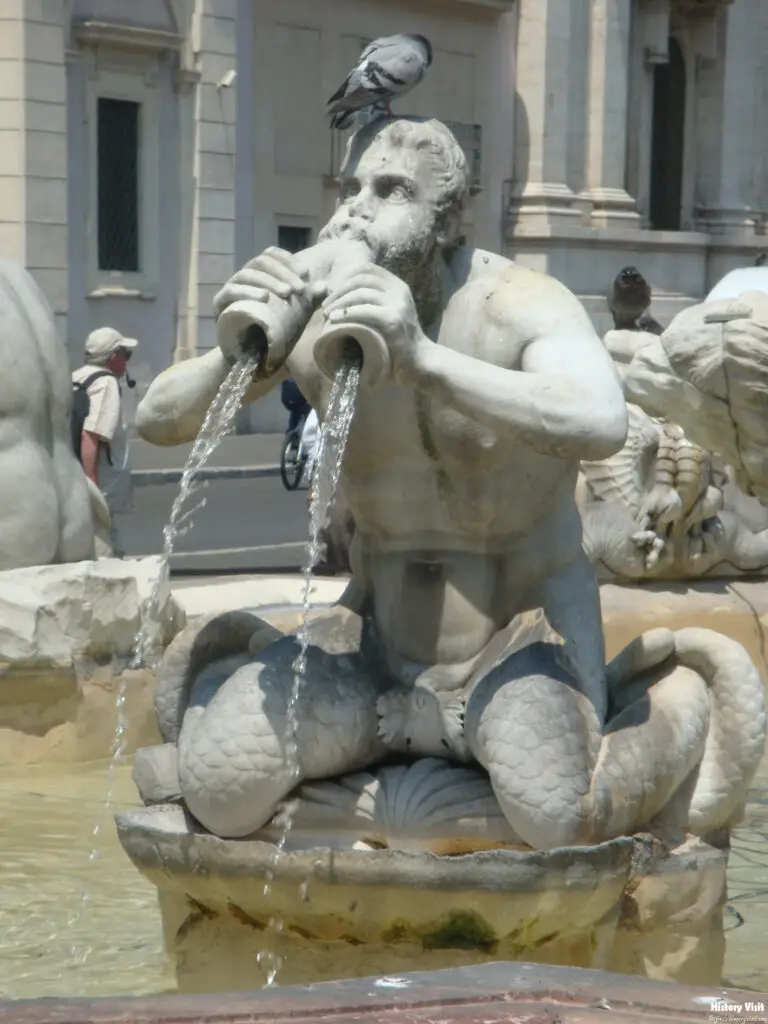
The gods and monsters in the Moro Fountain are compelling. The central Moor figure is a river god. His struggle with the dolphin is intense. This depiction conveys strength and determination. The Moor’s features are exotic and distinct.
The Tritons surrounding the Moor are also significant. Tritons are mythological sea creatures. They are often depicted with the upper body of a man and the lower body of a fish. In the Moro Fountain, they are lively and dynamic. Their presence adds depth to the scene.
Bernini’s portrayal of these figures is masterful. He captures their essence with precision. The gods and monsters in the fountain are lifelike. They tell a story through their poses and expressions. This approach brings the mythological theme to life.
The Artistic Techniques Used by Bernini Lorenzo Bernini

Bernini’s artistic techniques are remarkable. He used a combination of realism and idealism. This blend creates lifelike yet idealized figures. His sculptures are detailed and expressive. The Moro Fountain is a prime example.
Bernini’s use of movement is notable. The figures in the fountain are dynamic. They appear to be in motion. This technique adds to the sculpture’s realism. The water enhances this effect. It flows around the figures, creating a sense of movement.
Bernini’s attention to detail is exceptional. He meticulously carved each figure. The Moor’s muscles and the Tritons’ scales are intricate. This level of detail adds to the sculpture’s impact. Bernini’s techniques are innovative and influential.
The Restoration and Preservation of the Moro Fountain
The Moro Fountain has undergone several restorations. These efforts preserve its beauty and integrity. Each restoration respects Bernini’s original vision. The goal is to maintain the fountain’s historical and artistic value.
The first significant restoration occurred in the 19th century. It addressed wear and damage. Subsequent restorations have focused on cleaning and preservation. Modern techniques ensure the fountain’s longevity. These efforts highlight the importance of conservation.
Preservation is ongoing. The fountain is regularly inspected. Maintenance ensures its continued beauty. Preservation efforts honor Bernini’s legacy. They allow future generations to appreciate his work. The Moro Fountain remains a testament to his genius.
The Cultural Impact of the Moro Fountain
The Moro Fountain’s cultural impact is significant. It is a beloved landmark in Rome. Tourists flock to Piazza Navona to see it. The fountain is a symbol of Baroque art. It represents Bernini’s contributions to the art world.
The fountain has inspired countless artists. Its design and symbolism are studied and admired. It is featured in art history courses worldwide. The Moro Fountain’s influence extends beyond Rome. It is recognized as a masterpiece.
The fountain also plays a role in Rome’s cultural identity. It is part of the city’s rich artistic heritage. The Moro Fountain is a testament to Rome’s history and beauty. Its cultural impact is profound and lasting.
Conclusion

The Moro Fountain by Gian Lorenzo Bernini is a masterpiece. Its history, design, and symbolism are captivating. The fountain is a testament to Bernini’s genius. His depiction of gods and monsters is lifelike and expressive. The fountain’s artistic techniques are innovative and influential.
Preservation efforts ensure its continued beauty. The Moro Fountain remains a beloved landmark. Its cultural impact is significant. It represents Rome’s rich artistic heritage. The fountain is a symbol of Baroque art. It highlights Bernini’s contributions to the art world.
The Moro Fountain’s story is fascinating. It reflects the power of art and mythology. Bernini’s legacy is enduring. The fountain is a testament to his genius. It continues to inspire and captivate. The Moro Fountain is a true masterpiece.


